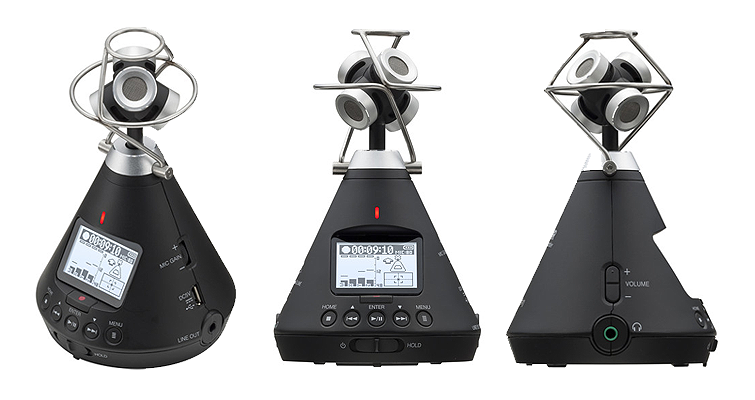Various microphones are available nowadays, and choosing the right microphone takes a lot of work. Among many other uses, audio companies make microphones for gaming, podcasting, music recording, studio use, and noise cancellation. In addition, microphones are built into the speakers, cameras and headphones. It helps to know the characteristics and behaviour of different types of microphones so that you can choose the most suitable one for a particular job.
Sound engineering and music have experienced rapid growth in recent years. Gone are those days when wires restricted singers and artists to a specific location. Freedom to move is necessary, and wireless microphone headsets have become essential.
Types of microphones
The right mic choice = a better recording. A little understanding of microphones is very helpful. These are some basics that every studio content recorder should know.
Condenser microphones
A condenser microphone has two charged plates that can move in different directions due to changes in air pressure caused by sound waves. The plates act similarly to a sound-sensitive capacitor.
Typically, one plate is made of a flexible metal material or plastic coated with metal and is positively charged by applying an external voltage source. The other plate, which acts as the microphone’s ground, consists of a rigid metal material set in place and grounded.
What They Do Best
Condenser microphones are very popular microphones for professional audio. They are useful thanks to the following qualities:
- Low-Mass
- Variable Polar Pattern
Condenser microphones are divided into two categories: large diaphragm and small diaphragm.
Large diaphragm condenser microphones
These are vintage microphones that performers perform in front of. These microphones add a touch of warmth and shine, giving vocals a full sound. What microphones are ideal for recording vocals?
Large diaphragm condensers are also standard for most instruments. They shine on both keyboards and acoustic guitars. More information from the sound source can be captured thanks to the wide aperture. These microphones are ideal for quiet sound sources due to their extreme sensitivity. Compared to dynamic microphones, condenser microphones are more expensive and fragile. However, one of these should be your choice if you can only afford one microphone.
Small Diaphragm Condenser Microphones
These tiny, thin, pencil-shaped cardioid microphones are also called pencil condensers. The tiny light diaphragm provides the finest detailed response to high frequencies. They are good at picking up sharp transients or the onset of sounds. For this reason, these microphones are ideal for bright percussion instruments, including shakers, hi-hats, tambourines and cymbals. Small diaphragm capacitors work great as top stereo pairs. With accurate stereo imaging, they can simulate the sound of a room. These will be arranged over a drum kit or, in a classical album, over several orchestral parts. Recording an acoustic guitar close to a stereo can produce a beautiful, detailed, and punchy sound.
Dynamic Microphones
Moving coil microphones are another name for dynamic microphones. They work on the following principle: a voltage is created on a coil of wire when it moves relative to a magnet.
The diaphragm of a dynamic microphone is mounted on a wire coil. A coil of wire surrounds the magnet. Typically, the diaphragm is made of aluminium alloy or other low-mass material, which allows low-mass air particles to move it. The wire coil moves with the diaphragm, swinging back and forth in response to changes in the atmosphere. As the coil rotates around a stationary magnet, a voltage is created on the wire as the coil rotates around the magnet.
What They Do Best
Dynamic microphones are durable and can be used with many sources. The following qualities are what make them so popular:
- Durable
- Directional
- High-Mass
- No Inherent Noise
USB microphones
Nowadays, condenser microphones are often used as USB microphones. The computer’s USB port serves as a power source. The USB microphone is a very popular model. The microphone and preamplifier are combined in one device and represent a complete solution. It works well with podcasts and YouTube because it’s sensitive enough to detect subtleties in spoken language.
Ribbon Microphone
The properties of a ribbon microphone can be compared to those of a condenser or dynamic microphone, except for the possibility of damage from phantom power. They can sound fantastic on anything from overhead drums to voices with the right ribbon mic.
What They Do Best
Ribbon microphones are less common in live performances but are still very common in studio settings. This is affected by the following characteristics:
- Low-Sensitivity
- Directional
- Low-Mass
- Low Inherent Noise
- Non-Linear Response
Carbon Microphones
Carbon microphones work on the following principle: their resistance decreases when the carbon beads are compressed.
Although they are not widely used today, carbon microphones were used in radio broadcasting and telephony from the early days of the technology until the late 1970s. A battery is needed for electric current to pass through the carbon pellets. Carbon and sound interact to compress the granules. As a result, the carbon’s resistance changes, causing the current to fluctuate in response to air movement. Carbon microphones have a narrow frequency response and a lot of noise.
What type of microphone is best?
After learning the features of each type of microphone, it’s time to choose the one that will best suit you and your style of music. A good condenser microphone is always a good starting point for recording vocals. You’ll get a better recording and a raised voice with something like a pro.
Are you more concerned with getting the most out of your live shows? Using a well-known dynamic microphone is likely the best option. What happens if you record multiple instruments in one session? In this case, consider using a ribbon microphone as your best microphone.
Hands-on Best Microphone for Your Content
The saying “you get what you pay for” especially applies to microphone types. The microphone, the most essential part of the signal chain, can be connected via USB to a computer, mixer or audio interface. While gathering microphone accessories for your home recording studio, it’s worth experimenting with a few microphones to see which is ideal for your project. Get the best microphone at an affordable price.




